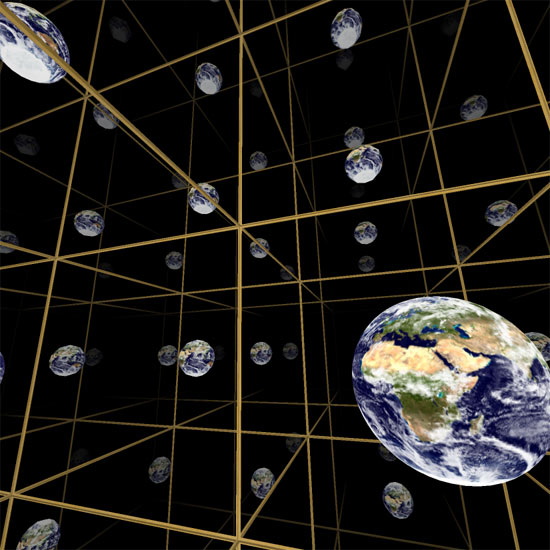And just to be clear, this is pretty much the only option that would allow a finite universe, right? Otherwise it would just be infinite, like Trekker mentioned...
Well, when most people talk about an infinite universe, they envision an infinite pre-existing volume and that the
big bang was some explosion in that volume.
It is hard to move people beyond ideas based on physical experiences.
The
big bang didn't happen
somewhere... it happened everywhere. Every point in space was once all together in the same point. There could never be any of those camera angles of someone watching the big bang from outside, because there was no outside.
Honestly, I cringe every time I see some special on physics that shows an explosion to represent the
big bang because I know that it is just reenforcing the idea that there was some pre-existing volume that the
known universe must be expanding into.
So in a real since, this is the flat Earth problem all over again. People thought of the Earth as a big disk that was completely flat, and if you when too far you'd fall off the edge. We know now that the earth has no edge and that the surface is closed, finite and without a boundary (which is the nature of the surface of spheres).
But some concepts are really hard... and the universe expanding with a complex geometry but not being within some nice, regular, infinite reference frame is one of those things that just isn't going to be accessible to everyone because some ideas are really hard to let go of.
I don't know if anyone downloaded that program or not so I'll show a quick image from it...
This is a space of finite volume (about 3.43x10^13 km^3), and the only thing in it is the Earth (singular, only one Earth). The topology of space makes it seem like you can see lots of Earths running off into the distance, but it is like a house of mirrors in that there is really only one. When you move past the frames shown you come right back in from the other side.
In this space there is no
outside, it doesn't exist within some other volume. All that there is is all that there is.
Now just take this up to a massive scale and have it increasing in size, and you've got a pretty close model of the universe. Only at some point the scale is so large that you don't see yourself anymore.
And even at this scale, the Earths you see in adjacent cells are actually being viewed as they would have looked about a second earlier as that is about how long light from them took to get to that camera. And the further away the images of the Earth are, the further back into the past we are seeing.
In mathematics we start off with standard Euclidean geometry, look at the geometries of surfaces in Euclidean space, and then remove Euclidean space altogether. But at each step of the way you gain some intuition before removing previous foundational concepts. I'm starting to wonder just how fair it is to just drop this type of thing on people and expect them to just
see it.



 This stuff was always very interesting to me. I am not a physics major so I've never sat in any lectures about the topology of the universe (only general topology courses).
This stuff was always very interesting to me. I am not a physics major so I've never sat in any lectures about the topology of the universe (only general topology courses).